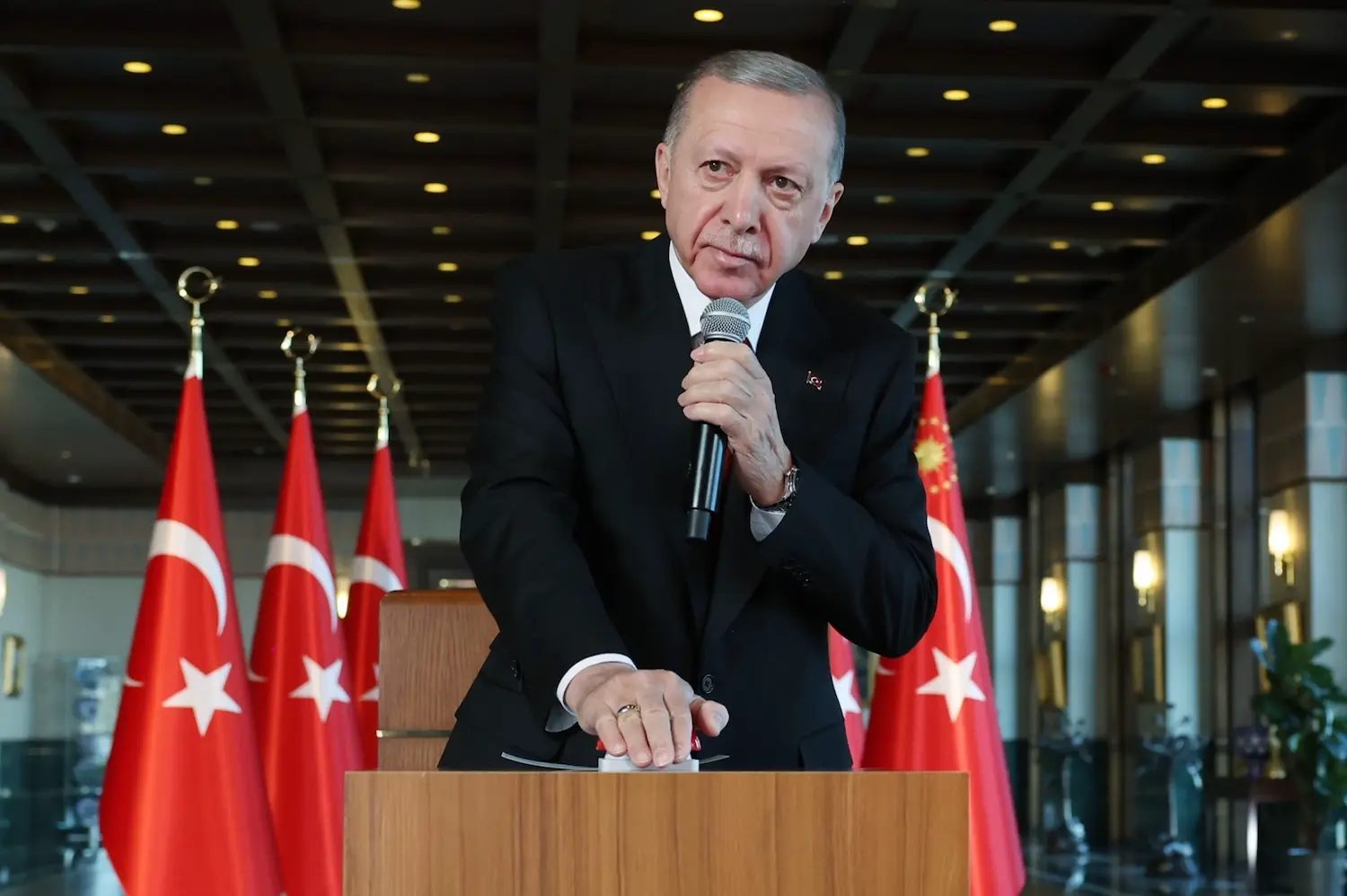President Erdoğan attended the "Earthquake Housing Draw and Key Delivery Ceremony" via live link

Speaking at the key delivery ceremony of post-quake houses, President Erdoğan said: “We have worked round the clock to rapidly heal the wounds of the quake zone and our quake victims that we as the nation and the state regard as a part of our own lives. We not only replace what the earthquakes have destructed, but redesign our cities with their streets, squares, production and employment infrastructures as well as their residential units and workplaces.”
President Recep Tayyip Erdoğan addressed via videoconference the key delivery ceremony of post-quake houses.
Thanking the public servants who have stayed in the region for months following the earthquakes that hit Kahramanmaraş and its neighboring cities, and have both stood by the quake victims and coordinated the construction works, President Erdoğan said: “We have carried out the world’s most successful recovery operation during the weeks and months following the disaster. We have stood with each quake victim, provided support to the relatives of those who lost their lives, and reached two million people with a TL115 billion worth of resource in every area, from transportation to rental fees, removal of debris to temporary accommodation.”
Underscoring that it is not that easy to overcome the problems caused by the disaster of the century, President Erdoğan stated that they aim to completely lift the burden of the quake from the shoulder of the country and the cities as of 2025, and added: “This picture constitutes to a construction activity that is way higher than the population and number of houses in many countries in Europe. Only we could overcome such a burden with national solidarity and with our strong experience in the area of disaster recovery and residential construction.”
President Erdoğan said: “We have worked round the clock to rapidly heal the wounds of the quake zone and our quake victims that we as the nation and the state regard as a part of our lives. We not only compensate for what the earthquakes have destructed, but redesign our cities with their streets, squares, production and employment infrastructures as well as their residential units and workplaces.”

